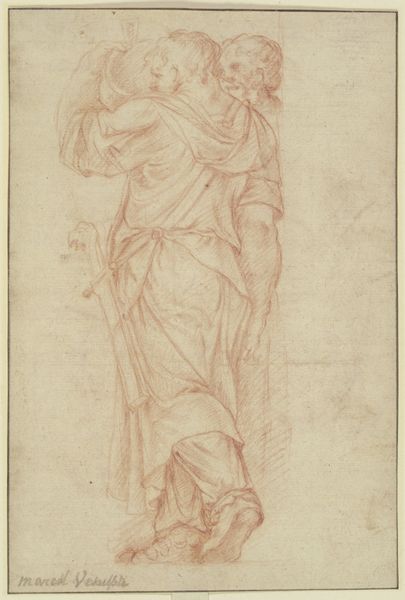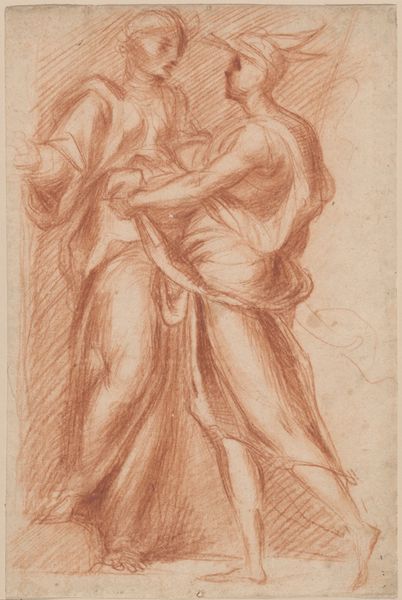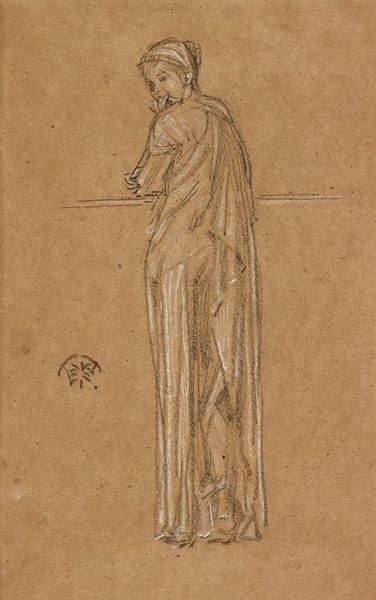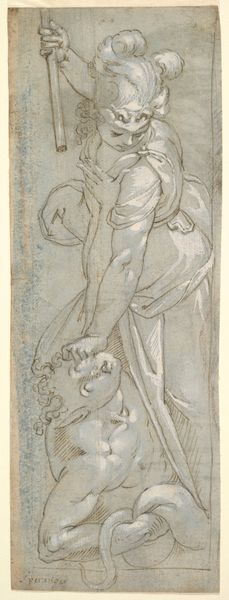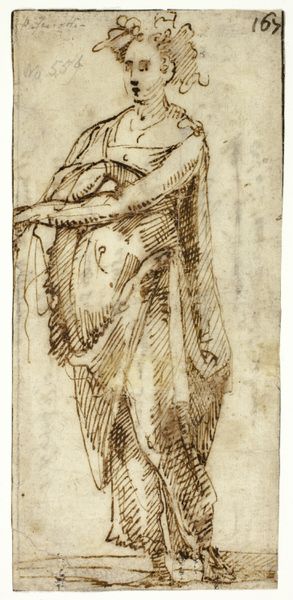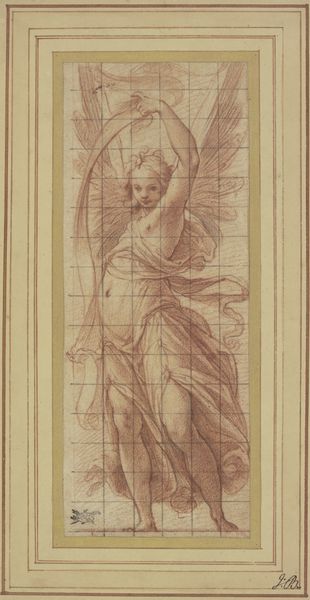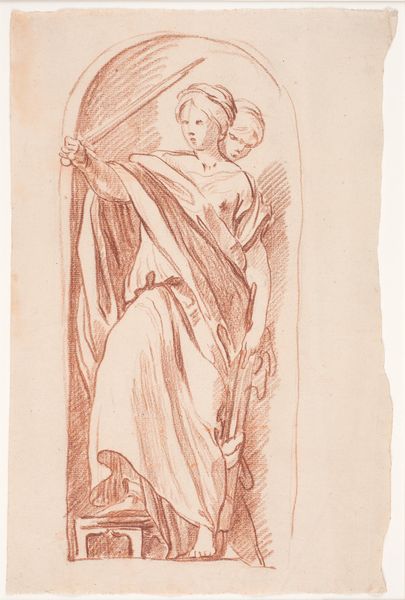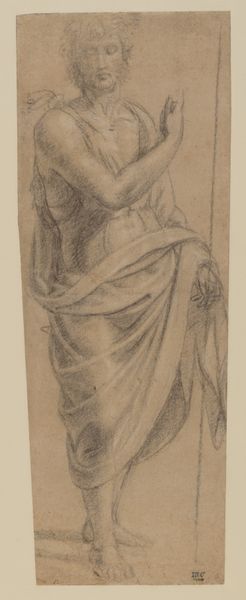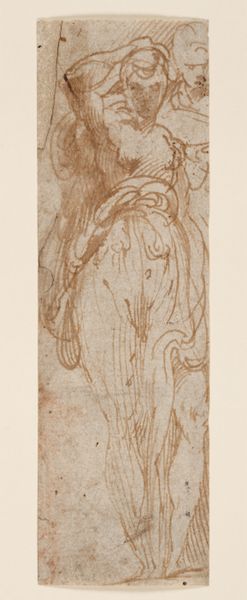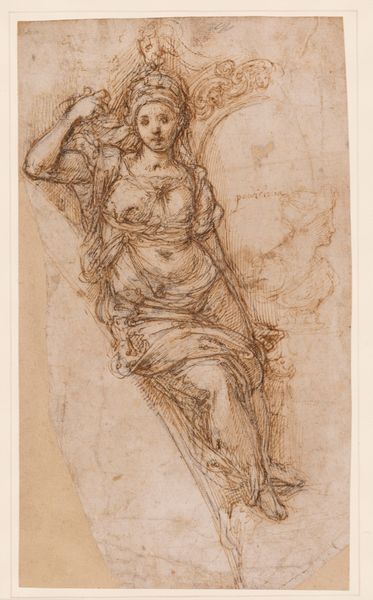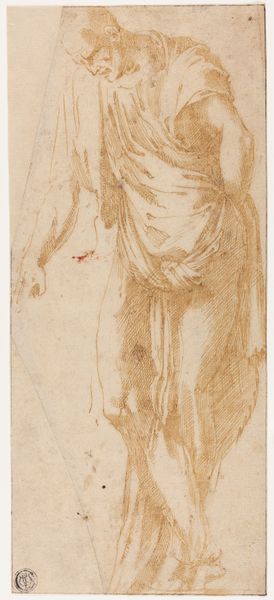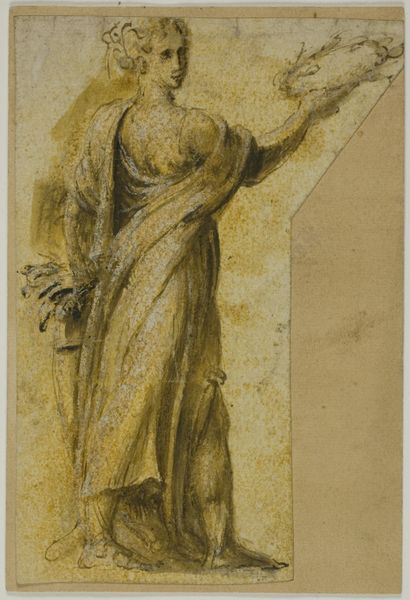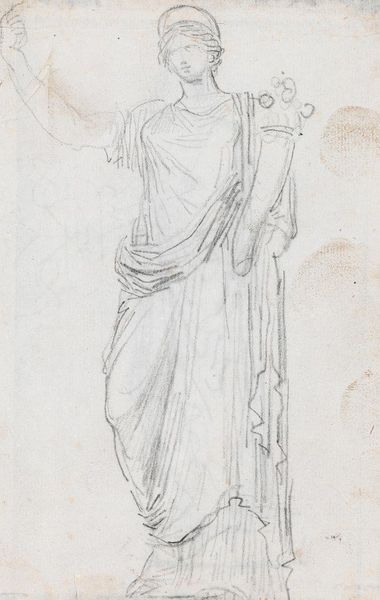
drawing, paper, dry-media, pencil
#
drawing
#
neoclacissism
#
allegory
#
figuration
#
paper
#
dry-media
#
pencil drawing
#
pencil
#
history-painting
#
academic-art
Dimensions: overall: 30 x 20.5 cm (11 13/16 x 8 1/16 in.)
Copyright: National Gallery of Art: CC0 1.0
Curator: Here we have Augustin Pajou's drawing, "The Muse Terpsichore," created around 1768. It’s a pencil drawing rendered on paper with dry media, showcasing a wonderful example of neoclassical ideals. Editor: The reddish-brown hues immediately evoke a sense of classical warmth, like looking at faded terracotta. She’s serene but almost burdened, as if carrying the weight of her divine responsibility, whatever it may be... a visual metaphor, perhaps? Curator: Terpsichore, as the muse of dance and chorus, often bears that weight in artistic interpretations. Notice Pajou’s use of the pencil—the delicate hatching defines form and texture, particularly in her draped garment and the decorative element at her side. One wonders what sort of paper supported such detail and how many different pencil grades he employed! Editor: I’m captivated by how unfinished it feels, almost like a dream half-remembered. The stark contrast between the finely rendered figure and the suggestive background throws her form into stark relief and focuses all our attention on the flow of her robes. Did you say pencil? Seems humble for such grand inspiration. Curator: That "humbleness" belies its economic impact and cultural cachet during the era. The drawing acted as a study for potential sculptures or larger works, demonstrating Pajou's skill and vision to patrons. The act of drawing, then, becomes the foundation upon which all future artwork, commerce, and influence are based. It's the locus of value production in many respects. Editor: Intriguing! Knowing the purpose provides another level of understanding. I imagined an artist alone with his muse. But understanding that economic underlayment makes the image far richer... Makes me ponder the line between raw creation and art-as-product a bit more. Curator: Precisely. Seeing art as the end product of a complex production process helps de-mythologize artistic genius. Instead, we are able to focus on the conditions that allow this work to come into existence, allowing viewers a new frame of reference with which to understand the relationship of society to artwork. Editor: Yes. This look, born from a simple, earthy pencil, carries eons. Gives one pause... Thank you, that has clarified the piece for me considerably.
Comments
No comments
Be the first to comment and join the conversation on the ultimate creative platform.
